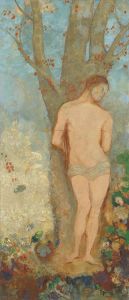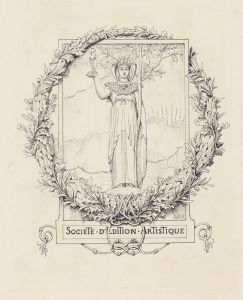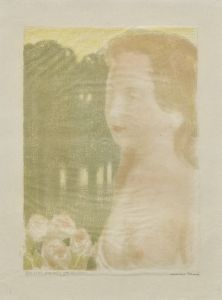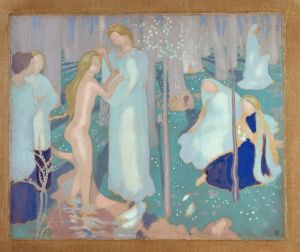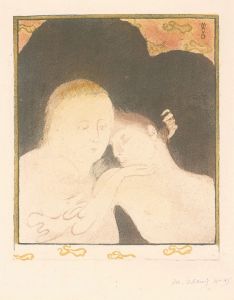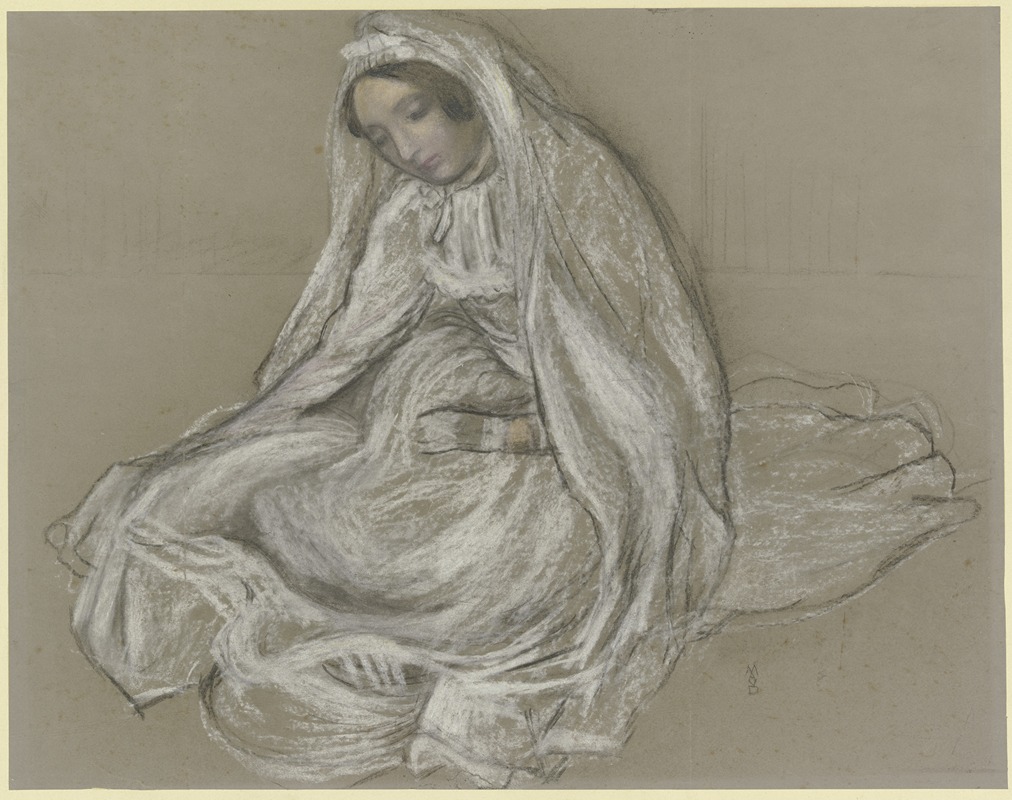
Sitzendes Mädchen in weißem Kleid
A hand-painted replica of Maurice Denis’s masterpiece Sitzendes Mädchen in weißem Kleid, meticulously crafted by professional artists to capture the true essence of the original. Each piece is created with museum-quality canvas and rare mineral pigments, carefully painted by experienced artists with delicate brushstrokes and rich, layered colors to perfectly recreate the texture of the original artwork. Unlike machine-printed reproductions, this hand-painted version brings the painting to life, infused with the artist’s emotions and skill in every stroke. Whether for personal collection or home decoration, it instantly elevates the artistic atmosphere of any space.
Maurice Denis was a prominent French painter and a key figure in the Symbolist and Nabi movements during the late 19th and early 20th centuries. His work is characterized by its decorative style, use of color, and emphasis on spiritual and symbolic content. One of his notable paintings is "Sitzendes Mädchen in weißem Kleid," which translates to "Seated Girl in a White Dress."
"Sitzendes Mädchen in weißem Kleid" exemplifies Denis's approach to painting, where he often focused on intimate, domestic scenes and the depiction of women and children. This particular painting captures a young girl seated, dressed in a white garment, which is a recurring theme in Denis's oeuvre. The use of a white dress is significant in Denis's work as it often symbolizes purity and innocence, aligning with the Symbolist movement's interest in conveying deeper meanings and emotions through visual art.
Denis was known for his belief that a painting should be, above all, a flat surface covered with colors assembled in a certain order. This philosophy is evident in "Sitzendes Mädchen in weißem Kleid," where the composition and color palette are carefully arranged to create a harmonious and aesthetically pleasing image. The painting reflects Denis's interest in the decorative potential of painting, as well as his commitment to integrating form and content.
The Nabi movement, of which Denis was a founding member, sought to break away from the naturalism that dominated the art world at the time. Instead, they embraced a more abstract and symbolic approach, often incorporating elements of mysticism and spirituality. Denis's work, including "Sitzendes Mädchen in weißem Kleid," often features simplified forms and a focus on the emotional and spiritual resonance of the subject matter.
Maurice Denis was also deeply influenced by his Catholic faith, which frequently informed the themes and subjects of his paintings. While "Sitzendes Mädchen in weißem Kleid" does not explicitly depict a religious scene, the serene and contemplative nature of the painting can be seen as a reflection of Denis's spiritual inclinations. The painting's emphasis on tranquility and introspection is consistent with Denis's broader body of work, which often sought to convey a sense of peace and spiritual reflection.
Throughout his career, Denis was involved in various artistic endeavors beyond painting, including writing and teaching. He played a significant role in the development of modern art in France, and his work continues to be studied and appreciated for its contribution to the Symbolist and Nabi movements. "Sitzendes Mädchen in weißem Kleid" remains an important example of Denis's artistic vision and his ability to convey complex emotions and ideas through simple, yet powerful imagery.
In summary, "Sitzendes Mädchen in weißem Kleid" by Maurice Denis is a testament to the artist's skill in blending form, color, and symbolism to create a work that is both visually appealing and rich in meaning. The painting reflects Denis's commitment to the principles of the Nabi movement and his personal artistic philosophy, making it a significant piece in the history of modern art.








